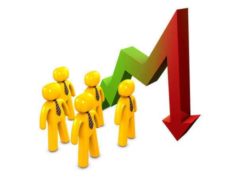
Deflation is marked by an increase in the value of currency and the concomitant decline of living costs. In more mathematical, synonymous terms, it is inflation with a value of less than zero.
To clarify, deflationary periods are distinctly different from disinflation in the respect that the former is a decrease in the market cost for certain goods, while the latter is only a limiting of the rate of increase associated with inflation. This can be remembered by looking at the fact that “inflation” is contained with “disinflation” and going from there.
Traditionally, deflation is depicted in terms of less abundant, more valuable currency on the national level. Nonetheless, “debt deflation,” as it is termed, may apply to different circumstances and populations altogether. At the personal level, debt deflation is germane to the reduced value of one’s secured assets.
In terms of the current real-world relevance of deflation (as opposed to its aforementioned manifestations which are more abstract), the going concern is that this period of economic crisis is promoting dangerous levels of deflation to the extent that the employment situation will not improve and demand for consumer goods that is so critical as a stimulus to the economy will not be achieved because of the low prices.
In fact, some have even coined a new term—stag-deflation—to refer to a scenario in which, as opposed to “stagflation,” inflation is of a negative value, yet unemployment rates exceed the norm.


















